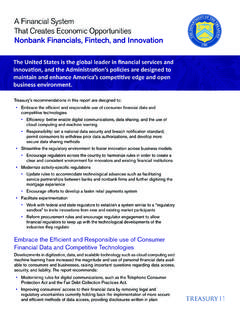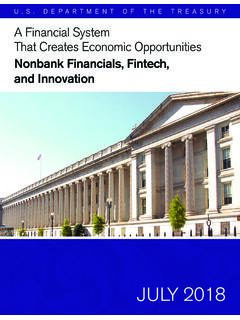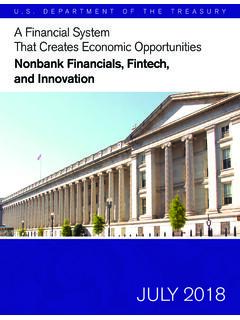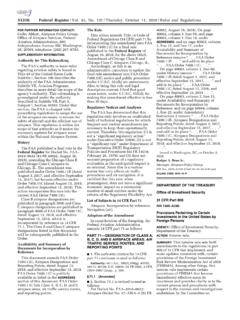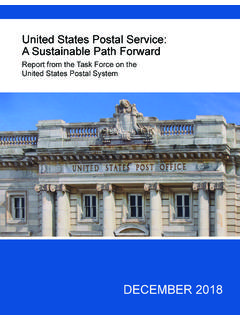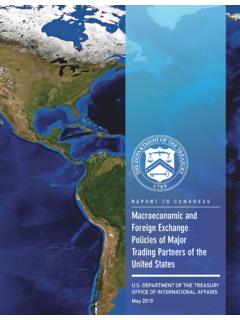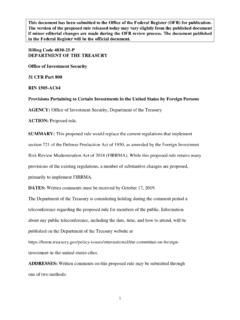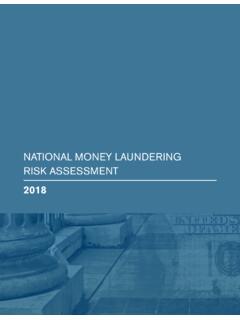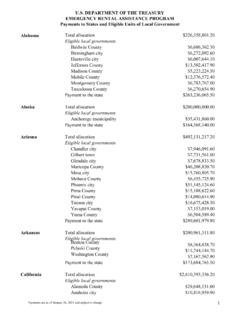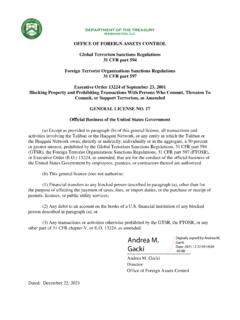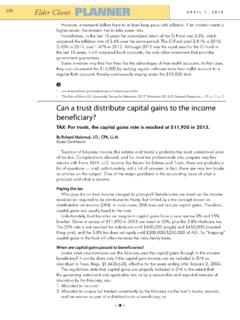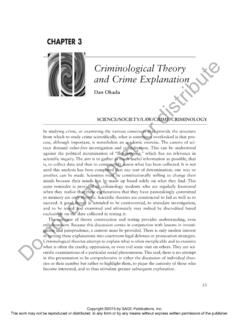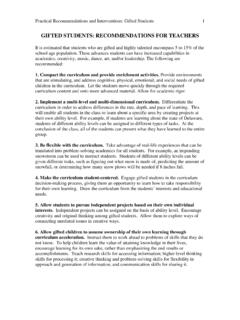Transcription of U.S. DEPARTMENT OF THE TREASURY
1 1 CORONAVIRUS LOCAL FISCAL RECOVERY FUND: GUIDANCE ON DISTRIBUTION OF FUNDS TO NON-ENTITLEMENT UNITS OF LOCAL GOVERNMENT DEPARTMENT OF THE TREASURY The American Rescue Plan Act of 2021 (ARPA) appropriates $ billion to States for distribution to tens of thousands of non-entitlement units of local government (NEUs). ARPA directs the DEPARTMENT of the TREASURY ( TREASURY ) to make payments to each State for distribution to NEUs within the State. TREASURY is providing the following guidance to assist States with their distribution of these funds to NEUs. Statutory Overview Sections 602 and 603 of the Social Security Act (the Act), as added by section 9901 of ARPA, establish the Coronavirus State Fiscal Recovery Fund (State Fiscal Recovery Fund) and Coronavirus Local Fiscal Recovery Fund (Local Fiscal Recovery Fund), respectively, which provide significant funding to help states and localities address the economic and health consequences of the pandemic.
2 Sections 602 and 603 of the Act provide for TREASURY to make payments directly to States, territories, Tribal governments, and various local governments, including counties and cities designated as metropolitan cities. In recognition of the significant differences across States in the ways that local governments are organized and the extent of the services they provide to their populations, Congress also provided for TREASURY to make payments to the States to allocate and make this funding available to smaller units of general local governments, NEUs. A State is required to allocate and distribute the Local Fiscal Recovery Fund payment received from TREASURY to each NEU in the State an amount that bears the same proportion to the amount of such payment as the population of the NEU bears to the total population of all the NEUs in the However, the total amount to be distributed to an NEU may not exceed the amount equal to 75 percent of its most recent budget as of January 27, Each State has 30 days to distribute these funds to NEUs, but TREASURY may provide extensions of this deadline.
3 As outlined below. TREASURY will make payments to States from the Local Fiscal Recovery Fund for distribution to NEUs in two tranches, with the Second Tranche payment to be made no earlier than 12 months after the date on which the First Tranche payment is paid to the Prior to Distribution Before distributing funds to NEUs, States will need to request payment from TREASURY , identify eligible NEUs within their State, calculate allocations, and collect certain documents from NEUs. Request the State s payment from TREASURY . A State s submission of a request for payment from the State Fiscal Recovery Fund under section 602 of the Act will suffice for TREASURY to initiate payment to the State from the Local Fiscal Recovery Fund for distribution to the State s NEUs.
4 Payment of this amount will be made to the bank account designated by the State with respect to the State Fiscal Recovery Fund. 1 See Section 603(b)(2)(C)(i) of the Act. 2 See Section 603(b)(2)(C)(iii) of the Act. 3 See Section 603(b)(7) of the Act. 2 Aggregate NEU allocations to each State can be found on , along with the allocation methodology. Identify eligible NEUs. States should identify eligible NEUs by following these guidelines: o TREASURY has provided on its website a list with names and population estimates for each local government (List), categorized by State, based on data from the Bureau of the Census (Census Bureau) with some clarifications by o The List includes both incorporated places and minor civil divisions (MCDs).
5 O All incorporated places on the List are eligible for payment. o MCDs serve as the primary subdivisions of a county in some States and are commonly known as towns (in New England, New York, and Wisconsin), townships, and In 12 States referred to by the Census Bureau as strong-MCD States these MCDs generally perform a wide set of general purpose local government functions. In eight other States referred to by the Census Bureau as weak-MCD States the MCDs generally play less of a governmental role but are still active governmental units. The other 30 States do not have governmentally functioning MCDs.
6 O States should approach the eligibility of their incorporated places and MCDs on the List as follows: For the 12 strong-MCD States6 and 30 States without governmentally functioning MCDs, a State should consider all the local governments on the List as eligible for payment. For the eight weak-MCD States,7 a State should consider all incorporated places on the List as eligible for payment. In order to determine the eligibility of its MCDs, the State should undertake a facts-and-circumstances test to determine whether the MCD has the legal and operational capacity to accept ARPA funds and provides a broad range of services that would constitute eligible uses under ARPA.
7 States should consider specific authorities and the size and composition of the budgets of these MCDs in making 4 TREASURY s compilation of the List, along with its broader definitional and data methodology, can be found on the TREASURY website. For ease of use, TREASURY is also providing a list of local governments excluding weak MCDs for the eight weak-MCD States. 5 The MCDs function as active governmentally functioning units in all or part of 20 States: Connecticut, Illinois, Indiana, Kansas, Maine, Massachusetts, Michigan, Minnesota, Missouri, Nebraska, New Hampshire, New Jersey, New York, North Dakota, Ohio, Pennsylvania, Rhode Island, South Dakota, Vermont, and Wisconsin.
8 6 These States are Connecticut, Maine, Massachusetts, Michigan, Minnesota, New Hampshire, New Jersey, New York, Pennsylvania, Rhode Island, Vermont, and Wisconsin. 7 These States are Illinois, Indiana, Kansas, Missouri, Nebraska, North Dakota, Ohio, and South Dakota. 3 this determination. MCDs in these States that lack the capacity or do not provide the broad range of services that would constitute eligible uses under ARPA should not be eligible for a NEU distribution. States may categorically exclude all weak MCDs if none of them provide the relevant types of services.
9 TREASURY will defer to the States determination in this regard given their superior understanding of the particularities of their local governments authorities and operations. Before making initial distributions to NEUs, each weak-MCD State should identify on the State s website the names of MCDs that the State removed, accompanied by an explanation of the State s determination. As stated above, strong-MCD States and States without governmentally functioning MCDs should not undergo this facts-and-circumstance test. In addition, weak-MCD States should not undergo a facts-and-circumstances test with respect to their incorporated places.
10 Calculate initial allocations. o As stated above, ARPA requires States allocations to NEUs to be based on the proportion of the population in the NEU as a share of the total population of all NEUs in the State. This requirement can be represented by the following formula: o States must use the population counts in the List, since these reflect the most recent data available from the Census o In some States, the boundaries of some NEUs overlap with or encompass other NEUs within the State, typically resulting in overlapping populations between the larger parent NEU and the subsidiary An example is a township that encompasses a city.
